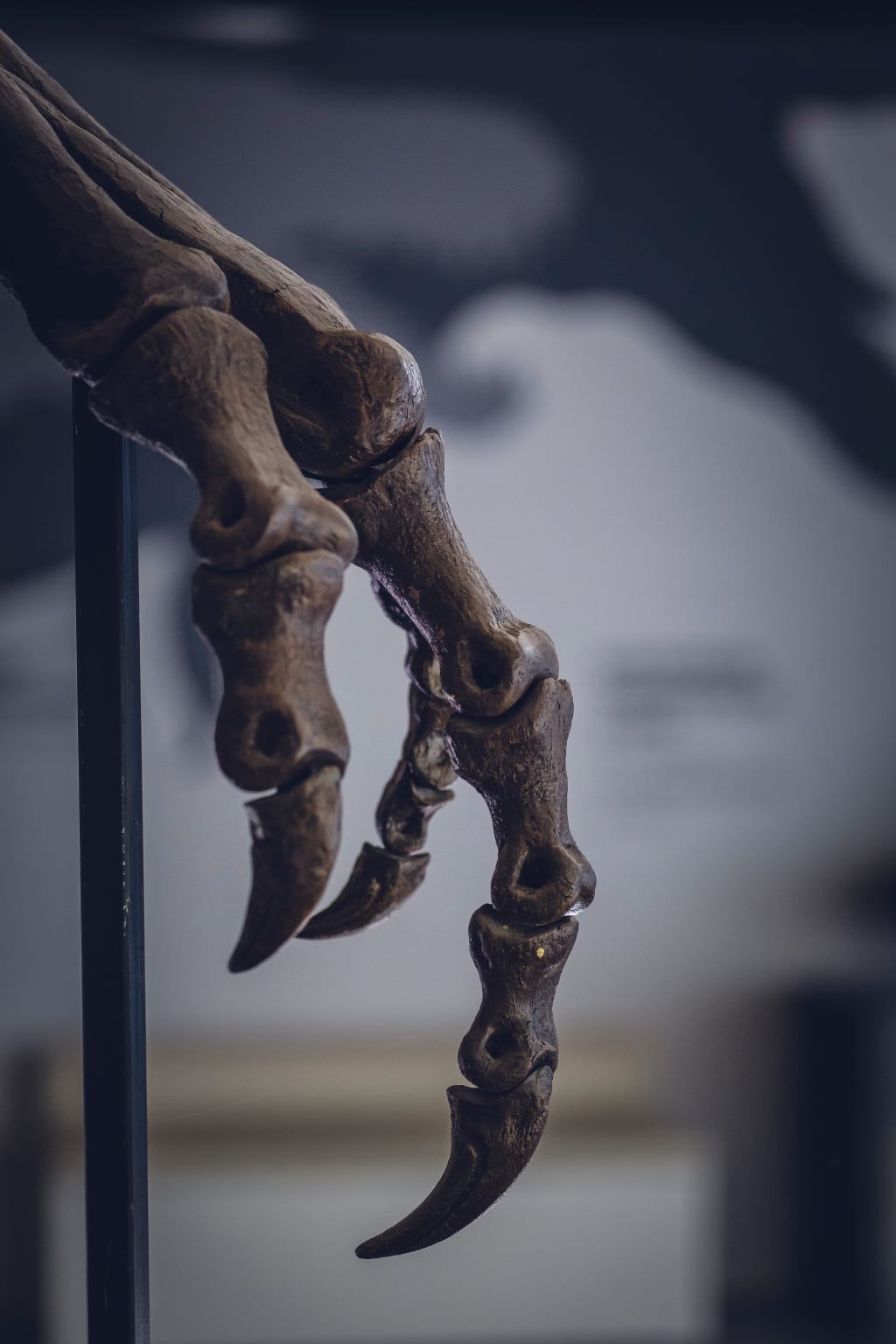The Truth About Dinosaurs
Have we been lied to...?

It has been widely believed that all dinosaurs became extinct 65 million years ago due to the impact of a massive asteroid, causing a mass extinction event. However, recent scientific findings challenge this notion. Contrary to popular belief, a particular species of dinosaur called theropods managed to survive. These theropods possessed unique characteristics such as feathers and hollow bones, enabling them to fly and escape the catastrophic aftermath of the asteroid impact. In fact, many scientists now propose that these theropod dinosaurs eventually evolved into birds, suggesting that dinosaurs are still present in our world today.
Another misconception about dinosaurs is their appearance. While it is commonly assumed that all dinosaurs were green, this is far from the truth. In reality, many dinosaurs likely had feathers, which served various purposes such as providing warmth and aiding in flight for certain avian-based dinosaurs. Furthermore, fossils have revealed that dinosaurs exhibited a wide range of colors, with preserved pigments indicating vibrant hues. Some dinosaurs may have even possessed specific camouflage patterns to blend into their environments. Additionally, dinosaurs did not all have scaly and slimy skin; different species would have had different textures to their skin, raising the possibility that some dinosaurs may have even been fluffy.
Contrary to the popular perception of dinosaurs as massive creatures, the reality is more diverse. While some dinosaurs were indeed enormous, there were also smaller species that existed. The image of dinosaurs as solely gigantic creatures is an oversimplification of the diverse range of sizes and forms that these ancient reptiles encompassed.
Dinosaurs have always been a fascinating topic for people of all ages. While some of them were giants, like the T-Rex and the Brachiosaurus, not all dinosaurs were of such massive size. In fact, many of them were quite small, some even the size of birds that we see today. The Microraptor, for instance, was a small dinosaur about the size of a crow, with wings and feathers that made it look like a bird.
Dinosaurs are often portrayed as slow-moving, cold-blooded reptiles, but recent scientific discoveries have shown that this is not entirely accurate. While some dinosaurs were cold-blooded, others were warm-blooded, and some were somewhere in between. Dinosaurs with feathers, for example, were likely warm-blooded, as feathers usually suggest a warm-blooded animal. However, the metabolic system of dinosaurs was more complicated than just being cold or warm-blooded. They may have had a mesothermic system, which allowed them to generate some internal heat, but not as much as a warm-blooded animal would.
The Brontosaurus is one of the most iconic dinosaurs, with its long neck and tail. However, it almost didn't exist. In the 19th century, it was accidentally classified as the Apatosaurus, a species with similar traits. It wasn't until 2015, after years of research, that the Brontosaurus was reclassified as its own dinosaur. Similarly, the T-Rex is often portrayed as a deadly predator that destroys everything in its path. However, this is not entirely true. To make the T-Rex even more terrifying, movies like Jurassic Park show that it can only see prey if it moves. This is also false.
Recent studies suggest that the T-Rex may have had superior eyesight compared to modern-day birds due to its large optic nerves. It is important to note that dinosaurs did not all exist at the same time. The Mesozoic Era, also known as the age of dinosaurs, spanned over 180 million years and was divided into three distinct periods: Triassic, Jurassic, and Cretaceous. Different species were unique to each specific era, and within 180 million years, some dinosaurs evolved into new forms while others went extinct. It is interesting to note that some of the most iconic dinosaurs, such as the stegosaurus and T-Rex, never actually coexisted and lived in entirely different time periods tens of millions of years apart.
Contrary to popular belief, the T-Rex did not have a Godzilla-like posture and could not stand upright. Early artists' renderings depicted the T-Rex with an upright stance, but paleontologists have since found that the dinosaur had a more horizontal posture. Its tail was held up off the ground, and its body was balanced over the hips. The upright stance that we typically see in movies is fun for Hollywood, but it would be unstable and impractical for the dinosaur to move around freely. When fossils are dug up, the shrink-wrap method is often used to portray how the dinosaurs looked. However, this method is incredibly inaccurate when it comes to how these dinosaurs actually looked because it does not account for any muscles, fat, or other soft tissues that the dinosaur had. Luckily, this method is considered outdated.
Paleontologists now consider the muscles and their attachment points to the bone when studying dinosaurs, which has resulted in a more accurate depiction of their appearance. By comparing dinosaurs to modern animals, researchers can determine where muscles would typically be attached. Over 1,000 different species of dinosaurs have been identified by paleontologists, but there are still many more waiting to be discovered. Some estimates suggest that we have only found about 30 percent of all dinosaur species, and there may be some that we will never find due to gaps in the fossil record. However, on average, about 50 new dinosaur species are discovered each year.
Determining the sounds that dinosaurs made is a challenging task for paleontologists. Fossilization rarely preserves soft tissues like vocal cords, making it difficult to determine their exact sounds. However, scientists believe that dinosaurs likely sounded more similar to birds and crocodiles, as they are the closest living relatives of dinosaurs. Models based on fossilized skulls suggest that dinosaurs may have produced low-frequency rumbles or bird-like calls. While the exact sounds remain unknown, the scientific community agrees that dinosaurs did not make the massive roars often depicted in popular culture.
As fascinating as it may sound, the idea of cloning dinosaur DNA and creating a real-life Jurassic Park is highly unlikely. DNA degrades over time, making the chances of finding intact dinosaur DNA essentially zero. Even if some DNA fragments were found, extracting them without contamination or deterioration would be extremely challenging. The notion of preserving dinosaur DNA in amber, as depicted in the movie, is also highly improbable, as DNA cannot survive for tens of millions of years inside amber. While the Mesozoic period was an incredible time in Earth's history, the possibility of cloning dinosaurs remains purely fictional.
About the Creator
Caleb Effiom
I’m a developer just decided to try writing articles for a change.






Comments
There are no comments for this story
Be the first to respond and start the conversation.